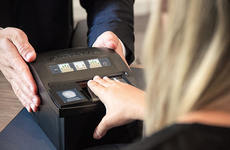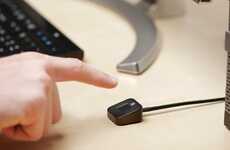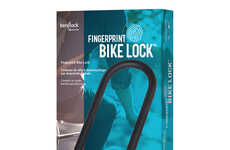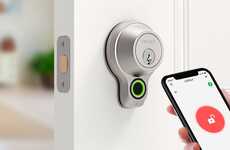
The VibWrite System Uses Biometric Authentication Technology
Alyson Wyers — November 23, 2017 — Tech
References: rutgers.edu & springwise
Fingerprints are often used as a form of biometric security, but this academic institution is developing authentication technology that uses finger vibrations as a new low-cost alternative. Researchers from Rutger University are working on a system called VibWrite, which uses the individual's finger bone vibrations to grant access.
Biometric methods are often considered the most secure, but the high cost of equipment is often a drawback. Proved 95% accurate, the VibWrite uses an affordable vibration motor and sensor that can be installed "almost anywhere." The theft-resistant authentication technology allows users to choose between a gesture, number or pattern. The team is focusing on making the hardware more weather-resistant and improving authentication algorithms.
Biometric identification methods are being increasingly incorporated by banks. The VibWrite could provide personal banking with an inexpensive option.
Biometric methods are often considered the most secure, but the high cost of equipment is often a drawback. Proved 95% accurate, the VibWrite uses an affordable vibration motor and sensor that can be installed "almost anywhere." The theft-resistant authentication technology allows users to choose between a gesture, number or pattern. The team is focusing on making the hardware more weather-resistant and improving authentication algorithms.
Biometric identification methods are being increasingly incorporated by banks. The VibWrite could provide personal banking with an inexpensive option.
Trend Themes
1. Finger Vibration Authentication - VibWrite's low-cost finger vibration authentication technology has the potential to disrupt traditional biometric authentication methods.
2. Weather-resistant Hardware - The VibWrite team is developing weather-resistant hardware to ensure the technology can be used in a variety of environments.
3. Gesture, Number or Pattern Identification - The VibWrite system's ability to allow users to choose between gesture, number or pattern identification could lead to wider adoption in various industries.
Industry Implications
1. Security Industry - VibWrite's finger vibration authentication technology has the potential to disrupt the traditional biometric security industry.
2. Financial Industry - The VibWrite could be implemented by the financial industry as a low-cost biometric authentication option for personal banking.
3. Access Control Industry - The VibWrite's low-cost hardware and theft-resistant authentication technology could disrupt the access control industry.
2.7
Score
Popularity
Activity
Freshness























